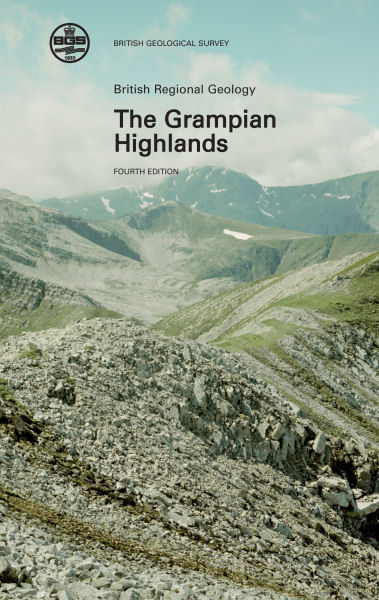Grampian Highlands [Book]

Price £12.00(no VAT)
The Grampian Highlands region covers a large area and understanding its complex geology calls for a wide variety of geological expertise. In consequence, this fourth edition of the guide is a cooperative product from the BGS Highlands and Islands Group, (including several former members of staff), and other parts of BGS.
The Grampians region is mostly one of uplands and mountains, and includes the highest peak in Britain, Ben Nevis (1343 m). It is an area much admired for its wild and unspoiled rugged topography and the deep and beautiful valleys in which run some of the most renowned of salmon and trout rivers such as the Spey and the Dee. In the north of the region, however, the countryside along the southern side of the Moray Firth is rather different, with more gently undulating hills, and a flat coastal plain is largely cultivated. These and other topographical differences reflect the underlying geology which provides an insight into the evolution of the area over 700 million years. The rocks of the uplands mostly record the development of the root zone of the Caledonian mountain belt in late Precambrian and early Palaeozoic times; subsequently many kilometres of rock were eroded to expose the rocks we see at present. It is only at the margins of the region that there are large developments of younger rocks, most notably the Devonian of the southern margin of the Moray Firth basin and the widespread but thin cover of Quaternary glacial and periglacial deposits.
Understanding the nature of the rocks, the geological history of the area and the processes involved to produce the present-day landscapes is essential if we are to properly understand and conserve the beautiful country and wild scenery which is the very heart of the region. It is also essential if we are to understand the distribution of natural resources and possible hazards which may result from any manmade developments. The resources include gold, baryte, small amounts of copper, lead, zinc and manganese and large quantities of both hard rock for aggregate, and sand and gravel.
I am sure that this fourth edition of the regional guide to the Grampian Highlands will prove as popular as its predecessors with geologists, planners, environmentalists, students and tourists and all those whose wish to have a better geological understanding of this magnificent region of Britain.
Author Stephenson, D. et al.
Format Book
ISBN 9780852725696
Year Published 1995

